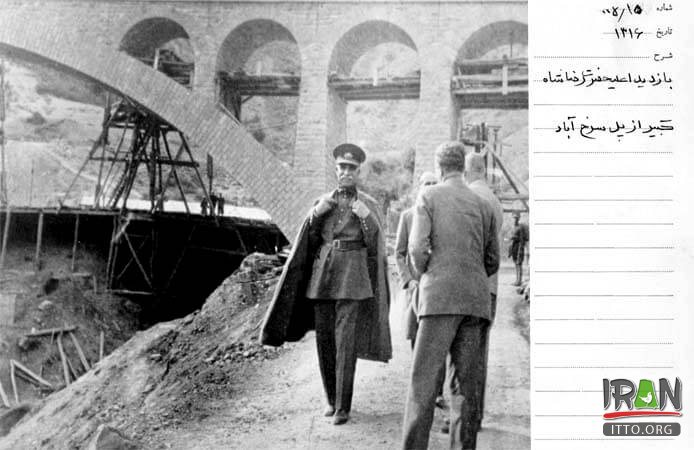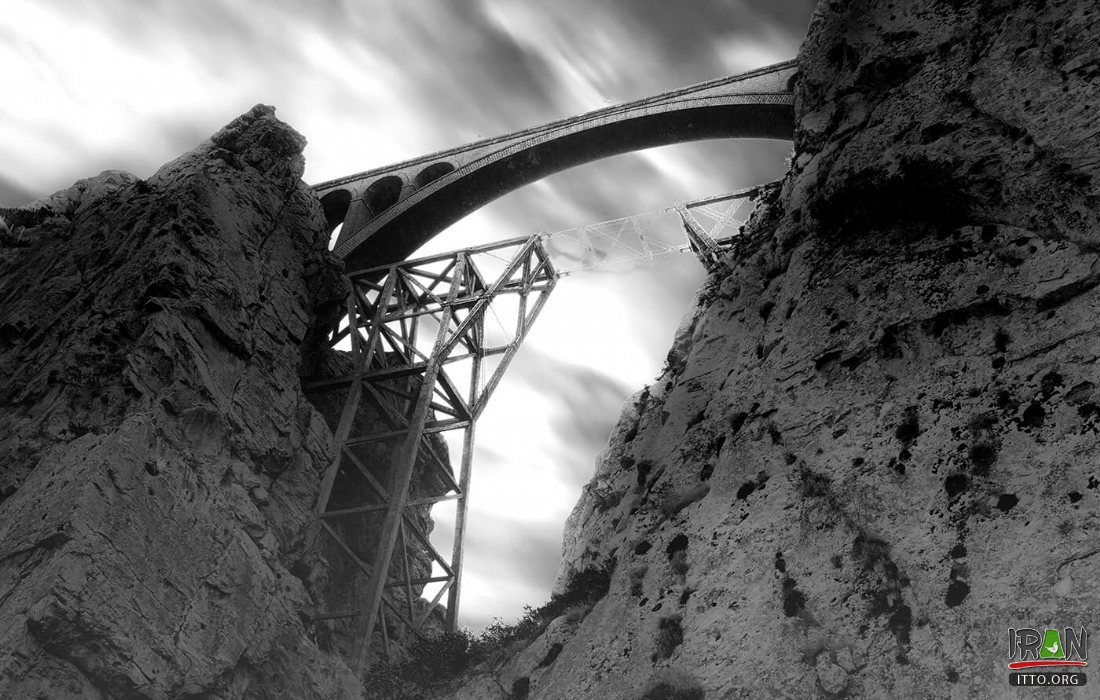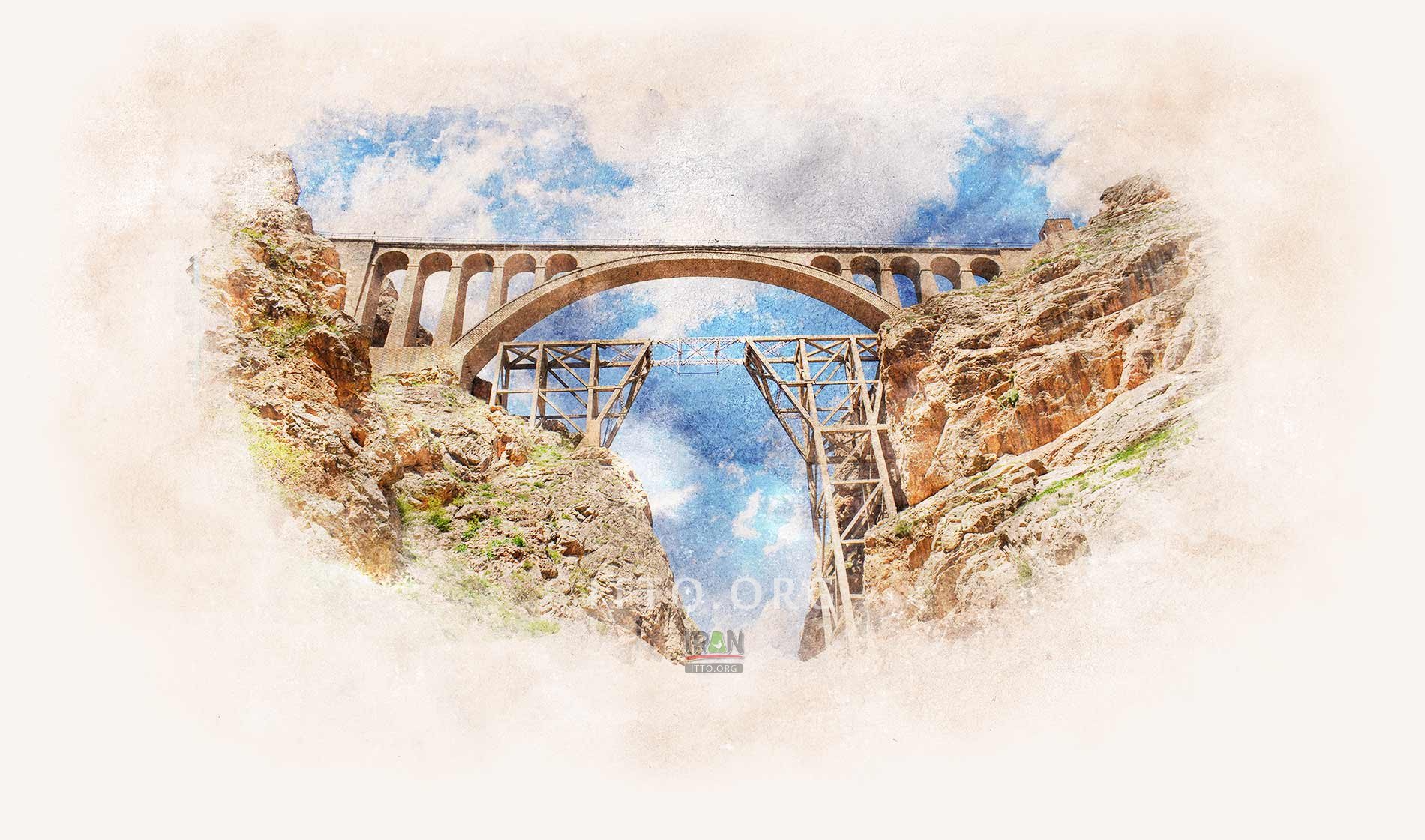the Veresk arch bridge was built in 1936 during the empire of Reza Shah Pahlavi. The difficult terrain required 55 tunnels along a 309 mile (497 km) route. A temporary steel falsework was left below the bridge – probably to facilitate future maintenance of the arch.
During world war II, it was reputedly known as the Pol-e-Piroozi, or the bridge of victory. The bridge is at an elevation of 110 m. and its arch measures 66 m. in length. The same is one of the master pieces of engineering to do with the railway track in northern Iran.

This bridge was built before Islamic revolution in Iran in order of Pahlavi dynasty's king, Reza Shah.
The historical role of the Veresk Bridge is not limited to connecting the south to the north of the country; Rather, the fate of the world changed during World War II, and if this bridge and railway had not been built. During World War II, Russian and British forces attempted to strike at Hitler’s Germany and its allies, and due to Iran’s special geographical location and the existence of railroads and oil wells, made it a place for rapid movement of weapons and ammunition between Allied forces they chose.
In 1926, Iran approved the plan to build a national railway in Iran, which was an important step in the development and prosperity of the country. According to this plan, a railway line would connect the south and north of Iran; However, its construction and laying required knowledge that did not exist in the country at that time. To this end, the Pahlavi government decided to outsource the construction of the railway to a foreign company, which eventually won the lottery under the name of the Danish company Kampsax.

The Veresk bridge (Pol-e Veresk) is a masonry arch bridge in northern Iran. It was constructed by Impresa G. R. Pizzagalli & C. from Italy from 1934 to 1935 by leadership of the Italian engineers, during the reign of Reza Shah Pahlavi.
The contract for the construction of the national railway was signed in May 1913 with the CEO of the Danish company, "Jorgen Saxild". He later used a view of Veresk on the cover of his book, Diary of a Danish Engineer, published in 1350.
The company had previously built 1,200 kilometers of railways in Turkey; Therefore, he was able to take responsibility for this project. Under the agreement, the Danish company was required to build 900 kilometers of railroads over a six-year period, receiving about 1.5 grams of pure gold ($ 5 gold) per meter of railroad. In general, the construction of this bridge cost two million and 600 thousand rials.

The bridge also called the Victory Bridge. Since, in the event of Second World War, Veresk Bridge and the northern and southern cross-country railway plays a decisive role for the victorious side of the war.
The design of this clever and beautiful bridge was the work of an Austrian engineer named “L. Von Robcevidc”. He said in an interview at the time:
The day I came up with the plan to build the Versailles Bridge, other engineers looked at it in amazement and considered the execution of the plan and its construction as one of the achievements of engineering. Now that this bridge has been built, everyone admires me and my comrades and considers it one of the best beautiful bridges and a masterpiece of engineering.
Hans Otto Notter, a mathematical and bridge construction genius who supervised the construction of stairways across Iran, was also in charge of computing engineers and the designer of the Versk Bridge.





